I travel a lot for work. Towards the end of a week on the road I tend to opt for staying in for dinner rather than going out. That means a lot of Uber Eats orders in the past few years (more than I would like to admit). Last week, an order in Dallas got me thinking; how the heck do they do it so efficiently in all the cities that I visit? Like any curious person, I went down a rabbit hole on Google. What I found is a deep commitment to the design thinking process, including Uber Eats designers visiting a city each quarter to learn about its transportation infrastructure and then shadowing delivery and restaurant workers as to get feedback and see real-world experiences.
Many other industry leading brands also use these human-centered design approaches as the heart of creating, defining (or redefining) new products, services, and experiences.
But….how does it all work?
The Innovation Process
We at Tumble, the Experience Lab at KS&R, typically utilize a design thinking approach to innovation, which allows us to find what is desirable and consider what is feasible and economically viable. The caveat to our design thinking approach is that our rich background in research drives a rigorous sampling plan that – combined with these design thinking techniques – ultimately instills confidence and sparks inspiration.
We often start with a working session among core business team members where we can build the infrastructure for collaboration by framing our challenge and hypothesizing the current experiences.
Empathy is a crazy powerful tool.
Empathy is the next (and arguably most important) piece. Utilizing a mix of techniques and tools appropriate for the topic, we closely collaborate with target audiences to define experiences – including value drivers, barriers, expectations, and opportunities – to maximize our efforts. Our extensive toolkit of activities is designed to work in-person or virtually and ensures we understand the needs so we can better solve the right problems. As Steve Jobs famously said, “You can’t just ask customers what they want and then try to give that to them. By the time you get it built, they’ll want something new.”
With that deep understanding in hand, Tumble believes the best ideation is a result of highly interactive and iterative processes. Working closely with the business teams, we immerse ourselves in the empathy phase and identify opportunity areas using tools like strategy matrices for deeper examination (like impact of the idea versus ease of implementation). Priorities are further refined based on additional observations, data, and insights. Finally, our collaborators will then prototype the top ideas.
A tangible representation of the idea.
A prototype is used as a way to think the idea through, and ultimately provides a means for experimenting. The visualizations often take the form of concept statements that illustrate and represent the concept, its benefits, features, and functionality. We typically start with a low-fidelity view (sketches) and then evolve as we become more certain of the design over time. Our designers are skilled at creating prototypes of all levels of fidelity, including when and how to upgrade based on our development needs.
We believe that we must pressure test our prototypes to ensure that the idea we envisioned actually solves the problem we are addressing. Typically, this is done qualitatively by re-visiting some of our empathy participants to showcase our solutions with the goal of letting customers influence the later stages of the innovation process.
The essential component for validation.
Finally, our strong research foundation drives our belief that quantitative research is essential to fully understand the market size and opportunity. Validation research is often the last step before bringing a prototype to market. As such, the research design needs to be strong enough to support the decisions being made. These results validate not only the level of interest in the solutions, but also measures the value, impact, and market opportunity.
We are passionate about innovation! Contact tumble@ksrinc.com to hear more about how we can help you better understand your customers and their experiences.


